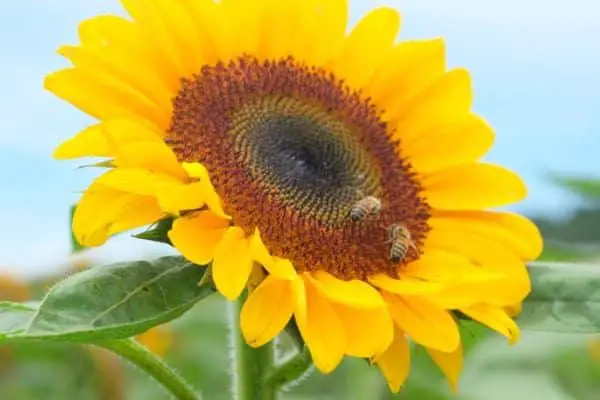Have you ever noticed large groups of bees around certain flowers, or perhaps a swarm of them congregated around a birdbath or swimming pool?
Observing this may have made you wonder if bees are attracted to particular colors, or if there is a distinct smell that draws them towards a plant or even your perfume.
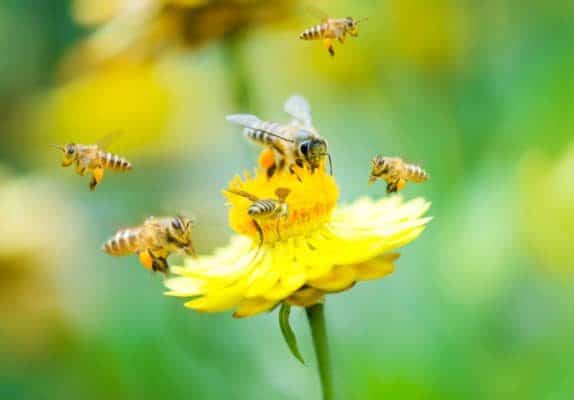
Are bees attracted to yellow? Bees are attracted to yellow, in fact, colors from ultraviolet and yellow. Bees don’t see colors as we do. Bees can’t see colors with longer wavelengths such as red, which appears black to them. Bees are also attracted to flowers by various other indicators such as smell, shape, and taste.
So how does the color spectrum relate to the congregation of bees around particular areas? And what else attracts bees to a flower or location?
Below we will discuss the attraction between bees and the following:
- Color
- Sugar
- Sweat
- Shape
Beyond these attraction elements, we will discuss why bees congregate towards particular areas and how they tell each other to do so.
How do bees see?
Bees have five eyes that allow them to see color. However, the majority of their information is gathered from a magnitude of sensory organs in their antennae. These sensory organs allow them to “see”, taste, feel, and communicate with each other and the world around them.
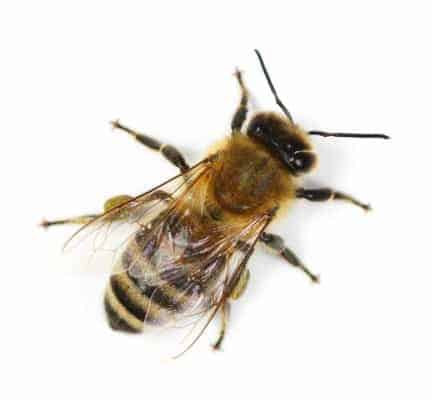
If you would like to gather a deeper understanding of bee sight, you can read about how bees see the world. Here their eyes and color understanding are looked at with detail.
With a basic understanding of how bees see, we can now discuss what bees are attracted to and why.
How does color attract bees?
As previously mentioned, bees are attracted to colors on the blue and yellow spectrum. This makes more sense when we take a deeper look into how flower colors relate to their nectar content.
It is common to find that flowers in the violet-blue range of colors produce the highest volumes of nectar.
Possibly the most fascinating part of color when related to bees is their ability to see ultraviolet light.
Many flowers have adapted in order to attract pollinators such as bees, by producing ultraviolet guide towards the center of the flower. These patterns are sometimes known as “honey guides” or “nectar guides”.
Because humans can not see ultraviolet colors, it may be difficult to understand this. In an article published in National Geographic, the glow of a flower’s nectar guide is shown using ultraviolet filters.
Sugar Attraction
Have you ever wondered why bees are attracted to nectar, and if they have the same attraction to honey?
Perhaps you have asked yourself why some beekeepers feed their bees sugar water and why the bees like it so much.
Bees collect nectar and use it for multiple purposes, one of which is to create honey. This honey is then stored as a food source for the winter months.
Nectar is naturally sweet which is recognized by a bee through smell and taste organs on their antennae.
It is this same sense of sweetness that attracts bees to honey and refined sugars.
According to the NSW Department of Primary Industries, bees are twice as attracted to sugar syrup than they are to honey. They also found that males bees live longer when feeding on sucrose compared to honey.
This further highlights the attraction of bees to sugar. It is for this reason that you will find bees buzzing around your sodas or attracted to sweet fruits such as watermelon and strawberries.
For similar reasons, you may find bees more attracted to you when wearing sweet-smelling perfume. Although this is not as likely, because bees quickly learn what smells produce the best nectar reward and communicate the information to others.
So if not your perfume, why are bees attracted to you?
Bees and Sweat
Just about anyone who has spent time in a garden will have at some stage experienced a bee buzzing around them, or trying to land on your skin.
This is because bees are attracted to the smell of human sweat. This may seem a bit gross, but for bees, it is not that stale odor that humans experience. Human sweat can smell sweet to bees, and if it is, then you may find them attracted to your skin.
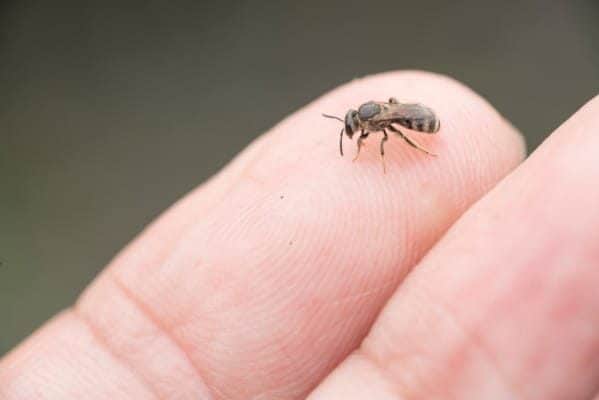
The species of bees that most commonly do this are known as sweat bees, although you may find honeybees gravitating towards you if your sweat is particularly sweet or if it is mixed with sweet-smelling perfume or sunscreen.
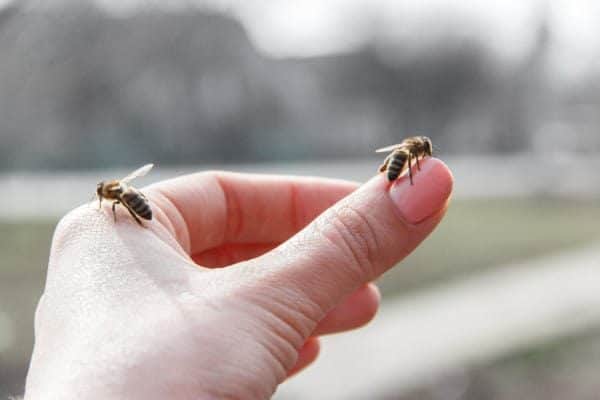
Bees are attracted to Shape
Different flowers are shaped to attract different types of pollinators. This results in bees being more attracted to some shapes than others.
A published study by The Royal Society Publishing found that bees are more attracted to symmetrical patterns. The study also found that bees preferred patterns with radiating elements and had a negative attraction to those of circular or random patterns.
We can look at this from the structure of different flowers and compare a bees attraction to them.
Bees tend to gravitate towards plants that produce singular shallow flowers. These flowers tend to be tubular in shape and contain a landing platform (usually where the nectar guide is placed).
Plants such as roses or peonies, with densely clustered petals, are less likely to attract bees as they may find difficulty landing.
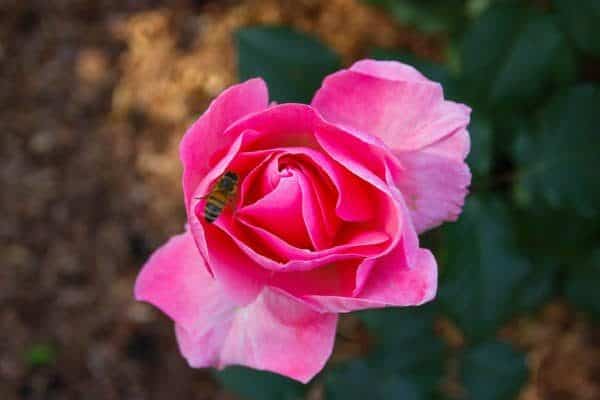
As mentioned above, bees are attracted to radiating patterns. This is why sunflowers are wonderful bee attractors due to their inner patterns.
Lavender, on the other hand, has small shallow tubular flowers that are appealing to bees.
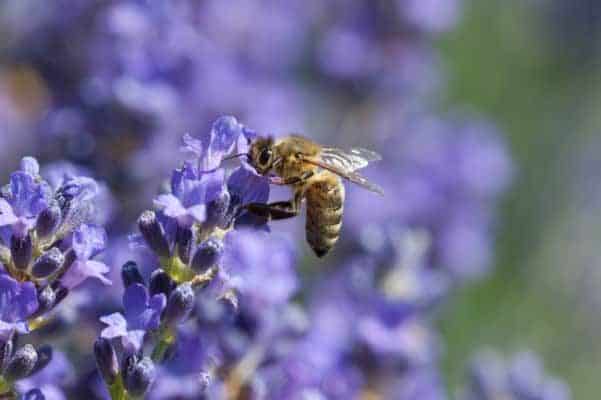
Bee Communication and Location Population
Because bees are attracted to so many elements and need large amounts of flower visits each day, it is important that they do not waste their time on “bad” flowers that are poor providers of quality nectar and pollen.
In order to communicate the direction and distance of a resource such as nectar, water, or a new home, worker bees return to the hive and perform a sort of “dance”. For more information on the dances that honey bees use to communicate the location of resources, we have an article “How bees communicate” that takes a deep dive into this topic.
This dance known as the “waggle dance” is used as a language to tell other females about the desired communication. Dr. Karl von Frisch (A Nobel prize winner in 1973) observed that the angle of this dance changed at the same rate as the sun’s angle, concluding that the bees were using the relative position of the sun as direction.
Some bees such as honey bees and bumblebees leave behind a scent on flowers they have visited. This scent will tell them if the flower has been visited before, and if it was visited by a bee from their own colony or that of another.
This will allow a bee to move on and not waste its time harvesting nectar from a plant that has been well serviced, or alternatively, let the bee know that the flower contains good sweet nectar.
It is this dance and the lingering scent that results in a bee congregation around water (which has no smell) as well as particular flowers in your garden.
The Perfect Flower
Taking into account all the above information on what bees are attracted to, we can predict what the perfect flower will be for a bee.
Color: Flowers with an ultra-violet to blue color spectrum are the most attractive to bees.
Taste: Bees prefer flowers with sweet nectar with the sugar content of a coca-cola. Less or more sweet that this is not ideal.
Smell: Sweet smells are attractive to bees as they indicate good quality nectar
Shape: Small tubular, and shallow flowers are preferred by bees because they are easy to navigate and harvest.
They also prefer symmetry and rotational patterns over circular and random shapes.
Some perfect flowers that use all or most of these elements include:
- Lavender
- Bee balm
- Sedum
- Catmint
- Borage
- Foxglove
- Crocus
On the other hand, when trying to attract more bees to a space, flowers that are red in color, circular, randomly patterned, or clustered should be used sparingly.
Flowers that do not hold a strong attraction for bees include:
- Roses
- Marigolds
- Peonies
- Chrysanthemums.
The Wrap Up
Bees are attracted to various elements that help them locate the perfect flower.
These elements include smell, color, taste, as well as shape, and patterns.
Bees are attracted to yellow, however, they gravitate more towards the ultra-violet side of the color spectrum.
Beyond their individual attraction to plants, bees communicate with a dance like vibration which points them in the right direction towards nectar-rich flowers or resources such as watering holes.
In order to attract more bees, a simple step is to create a space that includes the elements that they love the most.
However, if you wish to deter bees from being so attracted to you, you may want to wear red clothing, an unsweetened perfume or cologne, and perhaps a shirt with more random patterns on it.

